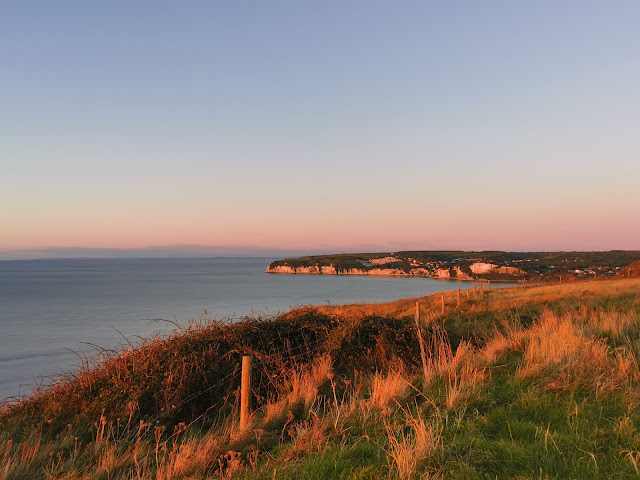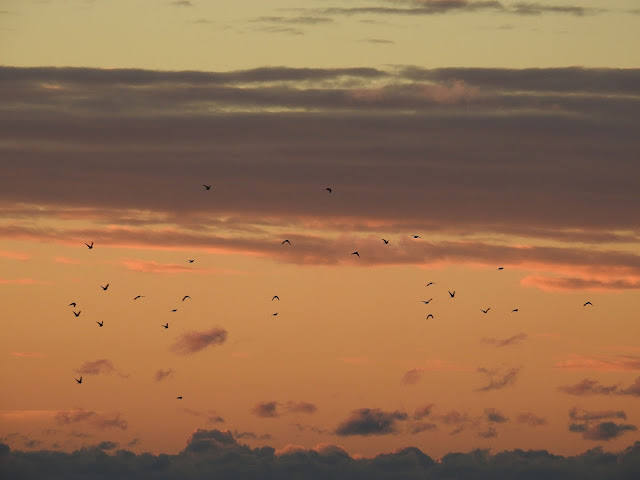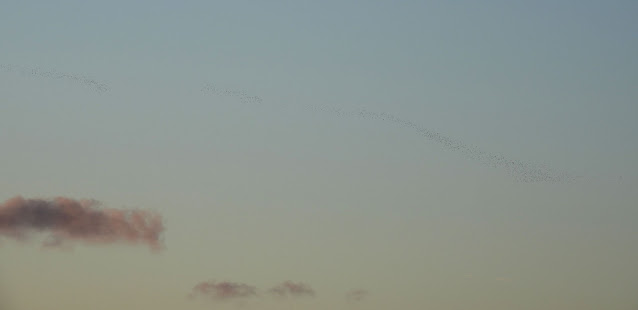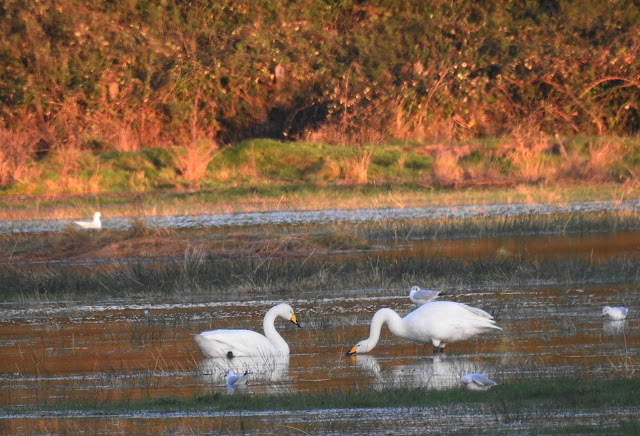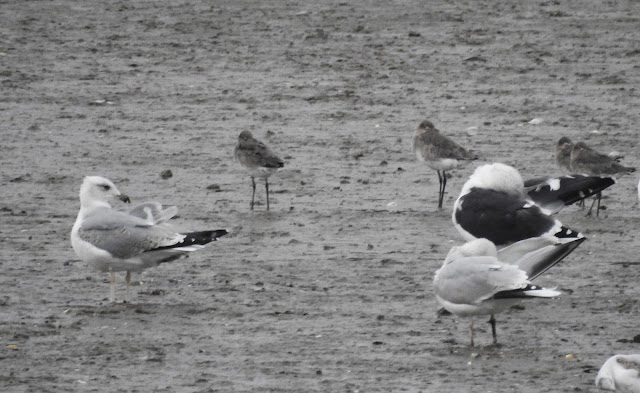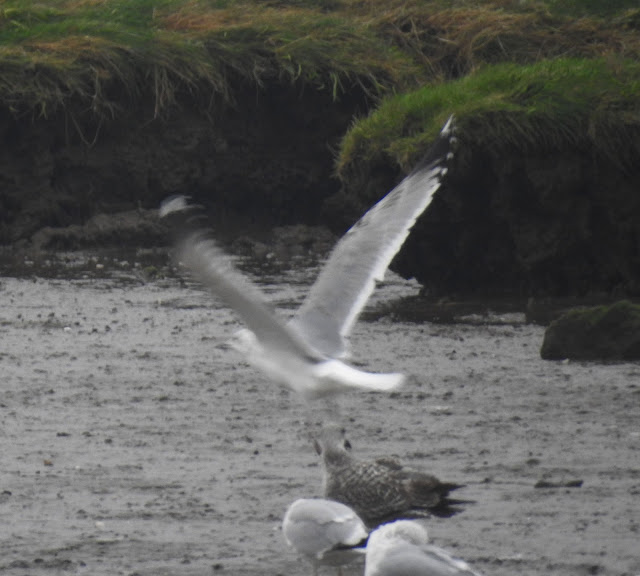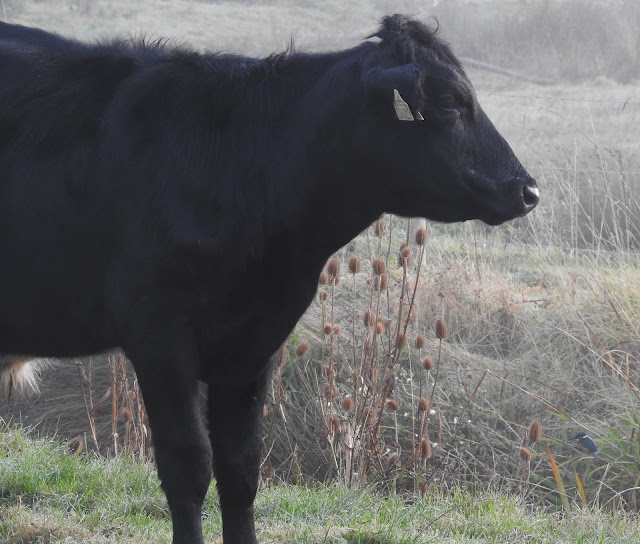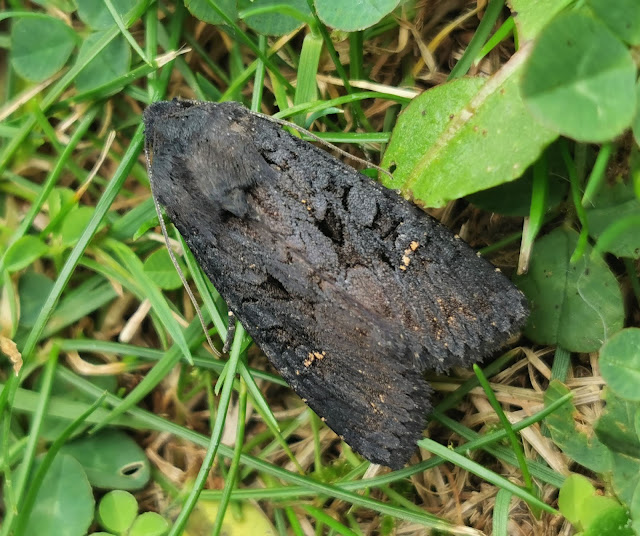Well the man that ate a bat in Wuhan City has now touched me, well via 246 million other people. Since my last post my whole household has gone down with Covid-19. My wife first, who suffered with it the worst but is now thankfully out of the woods, then Harry, and just as I was thinking I had dodged the bullet, me.
A second line appeared on my lateral flow last Sunday, which is also when I went for a PCR test. I knew the result before it came in on Monday, which made Monday day one of my ten days of self-isolation.
I am certainly not going to moan about being forced to stay home for ten days, because many people have had far worse problems when it comes to this virus, and I certainly don't want to be spreading it around. However, if at the start of the year I was asked which ten days I would least like to take out of my birding calendar, I'd say the end of Oct/early Nov (with late April a close second). So let me just call it inconvenient, which if is my only complaint about catching Covid-19 then I'll consider myself lucky.
Ten days of no birding in late Oct was never going to happen though, I just had to adjust my patch-size...
 |
| I am so blessed for this as a bedroom view! Behind those houses is Black Hole Marsh and the Axe Valley, not that I can quite see them! |
I do have more views, and this one out the back garden (looking north) has been really useful and full of potential. Am just waiting for another species of goose to join the flock...
 |
| Pity I don't live in Norfolk where these would all be Pink-feet! |
I also of course have plenty of sky to look at. Although I am not on a vismig flight-path anywhere is ok at this time of year to be honest. Looking up is where many of my highlights have come from so far, as has the highlight.
At 08:15 on 29th (day five) I was sat on the sofa in the conservatory enjoying a morning coffee, back doors wide open, when I heard 'seep'....'seep'... and I knew exactly what it was - Hawfinch! I jumped off the sofa grabbing my bins, and stepped outside just as it flew right over the garden, still calling as it headed east. The great front-heaving lump that it was. A garden first, my first on patch since Jan 2018 (the winter when they were everywhere) and a cracking good patch record - what a result. It is interesting that it flew east, as all vismig that day was flying west so I have been hoping to see it again, but nothing yet.
I have to be honest and say I am so thrilled Hawfinch call was still sufficiently logged in my brain that I knew exactly what it was when I heard it, as they are subtle. During the winter of 2017/2018 I made the absolute most of seeing Hawfinches (see THIS post) and the opportunity of hearing them so frequently.
Something I always say to people wanting to learn bird vocalisations is the key is to link the sound to a visual image or a moment in time. This Hawfinch-find was proof of how efficient that technique can be. When I heard the first 'seep' I was instantly transported to the minor road behind Shute church in December 2017 when a couple of Hawfinches flew out of a Yew Tree calling. I have to be honest, if my bird was giving just the 'tic' call it wouldn't have registered without seeing it, but there's a unique quality to a Hawfinch 'seep', take a listen HERE. Similar in structure to Redwing but shorter, cleaner and thinner.
Right, now to the rest of the birds...
I am on day seven of my ten day isolation, and have managed a total of 67 species. Days four and five were my illest so I didn't spend much time looking on these at all, and since I have felt better work has been my main priority. Currently my birding is restricted to early mornings whilst Harry eats his breakfast, then a bit at lunchtime. At all other times my ears don't stop working though, as I work from a desk in the conservatory with the doors wide open (whatever the weather - much to Jess' delight!). The highlights from the rest of the 66 species are:
Wood Pigeon - obviously very common, but some good movement on two dates as expected at this time of year. Best was yesterday with several large flocks south down the valley and then turning west, with plenty of Stock Doves mixed in.
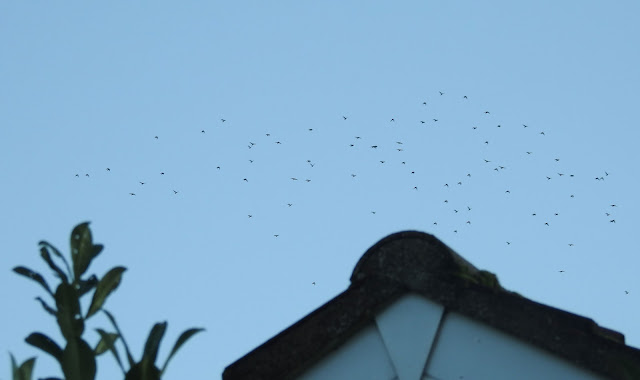 |
| Wood Pigeons heading west |
Moorhen - one heard calling on day three.
Greenshank - heard calling three times from my bedroom on day four.
Snipe - three flew high west overhead just before dusk on day four.
Cattle Egret - one flew north up the valley out of roost with Little Egrets on day three (sadly failed to connect with the Great White seen in the valley briefly the previous afternoon).
Sparrowhawk - seen daily since day three, including a male in full display.
Peregrine - Great to watch an adult and a juvenile play-hunting corvids around the house on day four.
Tawny Owl - one calling pre-dawn on day one and not heard one since!
Jay - seen every day in small numbers, most over high west clearly migrating. Max of seven on day two. This really is far from 'the norm', we are witnessing an exceptional autumn for this species without doubt.
 |
| Two migrating Jays |
Skylark - birds seen/heard 'vismigging' most days, with day six the best so far with a couple of >10 flocks flying west.
Cetti's Warbler - heard singing on two occasions from Black Hole Marsh on day four. Only second time I have ever heard from the garden!
Chiffchaff - just the one on day five, very poor considering the date.
Redwing - seen daily, often just small numbers but today and yesterday a more notable passage with 80+ west over yesterday, and 40+ grounded and 90+ high north east today.
Chaffinch - as expected commonly occurring but obvious vismig noted most days with some small flocks noted.
Bullfinch - two on day one in trees by house, a decent garden record.
Lesser Redpoll - one over calling on day two.
Siskin - noted most mornings, but only odd birds no big numbers.
Reed Bunting - surprised to have noted a total of seven singles over west, probably a vismig and more local movements.
It is surprising just how hard it is to see some of the Estuary and Wetland birds despite the above view. We have just shy of 100 Black-tailed Godwits on the Estuary, and I hadn't seen one until this morning (day seven) when a flock of 50+ flew up the valley. Even the commonest species like Lapwing, Wigeon, Teal and Curlew aren't easily seen, as they can only be seen when they happen to fly though the small patch of sky that I can see from the house, when I am looking at it. A combination which clearly occurs surprisingly infrequently. I am yet to record Redshank, have only seen one Teal, and it took me six days to see a Mute Swan.
Here's a typical view of two of the species mentioned above...
 |
| Lapwing flock as viewed from the house with the tail end of a Wigeon flock flying in front of the far hill |
Most of the days have been a bit wet and windy, so with clearer skies forecasted for the remainder of my self-isolation, I am hoping I have even more success looking up.






